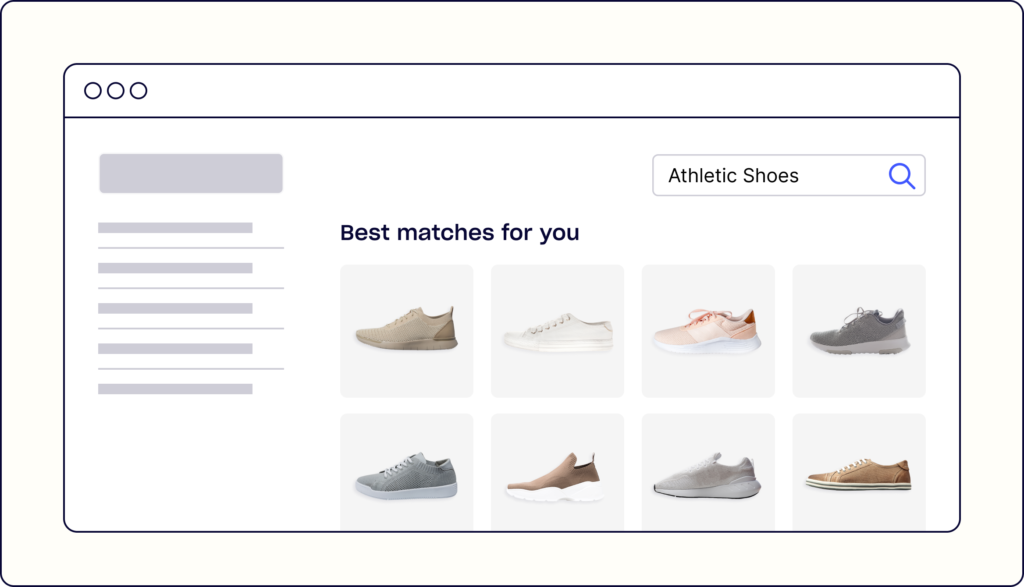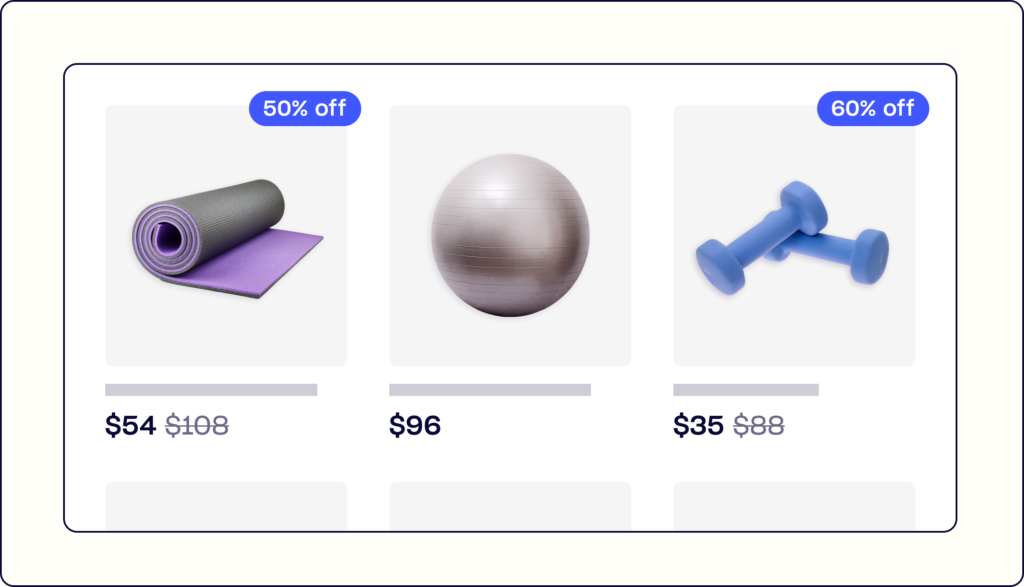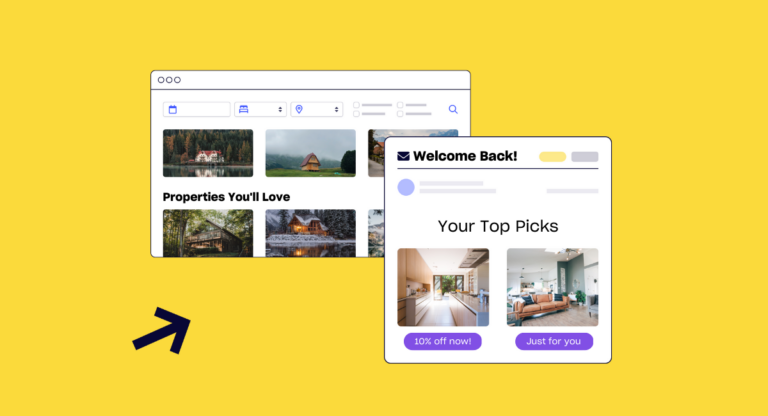What is Predictive Personalization? A clear-cut guide
These days, personalization is no longer a nice to have.
Whether it’s your website, email communications, or any other digital touchpoint, consumers expect it, and performance requires it.
But digital personalization solutions haven’t made it easy. At least not to deliver truly personalized experiences at scale without a platoon-sized marketing team.
Great results require significant investment in setup and ongoing manual optimization, not to mention paying for and learning complicated personalization tech.
On the other end of the spectrum, quick and easy personalization plug-ins promise to deliver better results for minimal cost, but fall short in terms of performance impact and control.
Enter predictive personalization. The best of both worlds.
Predictive personalization engines leverage machine learning to automate personalization at the most critical touchpoints along the customer journey with ever-improving results.
In this post, we’ll teach you exactly what predictive personalization is, the touchpoints what it does for you, and how to get started.
Predictive personalization definition
Predictive Personalization
[ pri-dik-tiv • pur-suh-nl-ahy-zey-shuhn ]
Predictive Personalization is the practice of using machine learning to predict the affinity and intent of every person, and then deliver precisely tailored content, products, and messages to each individual. Automatically.
Most personalization solutions out there are large software suites that require meaningful time and expertise to leverage (think: rules-based segmentation).
Other product recommendations and site-search setups are simple “out-of-the-box” features or cheap plugins, with lightweight to non-existent personalization capabilities.
Predictive personalization works on a different level.
Here’s an example you’re familiar with: Google, Facebook, Tik Tok, and Airbnb are powerful search & social publishers. These systems use predictive personalization to optimize the job of putting the right content in front of the right person at the right time. They create relevance.
How Predictive Personalization works
Predictive personalization can be easily explained in three parts.
1. Feed data into a machine learning engine
This maps the relationships between individual customers and their intent, affinities, behavior, and purchase trajectory.
To increase accuracy, ML engines can ingest any kind of data. Some examples:
- Customer Profile
- Transaction History
- Website Engagement
- Product Data
- Device & Environment
- Marketing Data
- Human Intuition (a form of data input!)
2. Deploy personalized touchpoints to shoppers
The personalized widgets for shoppers are distributed across strategic locations, and automatically update your website for each site-visitor. No manual work.
You provide users a unique and relevant experience, at scale.
3. Outcomes are fed back into the system to keep “learning”
Conversions, abandonments, and more are fed back into the engine to improve the machine learning model’s performance. Continuously.
It’s a self-learning technology.
Now that we know how it works, let’s talk about benefits.
Benefits of Predictive Personalization
Predictive Personalization drives up brand value & customer experience.
When shoppers experience a richly personalized experience, they are:
- more likely to engage with content
- more likely to purchase (and purchase more)
- more likely to return as loyal customers.
This leads to growth in your top line revenue. It’s that simple.
Some real life examples:
1. Consumer Electronics
Gemini Sound deployed predictive personalization to improve conversion rate optimization. The results were jarring:
- Click-through Rate: 101% higher
- Visitor Conversion Rate: 73% increase
- Average Order Value: 28% larger
- Revenue Per Visitor: 128% more
Read the Gemini Sound Success Story Here.
2. Men’s Apparel
Bearbottom Clothing used a predictive personalization engine to simplify their website personalization, rather than using a complex, clunky suite. The performance lift was compelling:
- Personalized recommendations had a 55% higher clickthrough rate.
- Overall conversion rate was 8% higher.
- The revenue per website visitor increased by 9%.
Read the Bearbottom Clothing Success Story Here.
3. Vacation Rentals
Twiddy & Company used predictive personalization across web and email to deliver a tailored customer experience, at-scale. They saw big results for their guest bookings:
- 600% more direct booking flows initiated
- 250% improved website conversion rate and revenue per session
- $1M+ in new revenue generated per month
Read the Twiddy & Co Success Story Here.
Why now? Predictive Personalization has arrived
It is critical that your key revenue touchpoints are tailored to your audience one-to-one.
- Today, consumers simply expect it. 76% said personalized communications were key in their consideration of a brand. (Source: Shopify & McKinsey)
- And most notably, you’re losing money by not prioritizing these touchpoints.
Every site-visitor you don’t turn into a customer costs you thousands: wasted ad spend, marketing resources, future purchases, referrals, reviews, etc.
This technology is now available to any sized business, not just the giants. The tools of big tech have been democratized. They are within your grasp.
3 Predictive Personalization use cases that boost revenue on autopilot
Here are 3 revenue touchpoints that are essential to power with machine learning.
1. Predictive product recommendations
Most eCommerce product recommendation experiences suck. Period.
Legacy product recommendations setups are simple “out-of-the-box” features or cheap plugins. Both of these offer lightweight to non-existent personalization capabilities, limiting their relevance and effectiveness.
Predictive recommendations let you deploy dynamic product recs that are created for each individual shopper on your website – whether a new anonymous site visitor, or a previous customer.
These widgets can be deployed on homepages, product pages, within shopping carts, emails, or wherever it makes sense to personalize the buying journey.
This is a revenue touchpoint that must use predictive personalization. It is critical to two goals:
- Product discovery – expanding your shopper’s search
- Driving purchases – narrowing down to most likely to purchase now.
ML makes it happen.
Check out our guide to predictive recommendations.
2. Predictive website search
Most website search experiences also suck.
Clunky personalization solutions out there often require investing in big software platforms. Site-search might be one feature, but marketers must still manually set up and maintain rules.
With predictive search, you can use machine learning to deliver search suggestions and results tailored to each specific shopper.
This revenue touchpoint exposes high-intent and is a salient time to improve the customer experience with predictive personalization.
Why shouldn’t the search results match not only the relevance of their search term, but also the predicted interests and purchase path of the shopper?
It should do both. And it can. More on predictive search coming soon.
3. Predictive promotions & pricing
Amazon is known for presenting different prices for different users in real-time. It’s a neat trick.
Existing tools out there for dynamic pricing and personalized promotions force you to leave money on the table. Why? They aren’t one-to-one.
Pricing and promos should take into account the individual customer, not just the market trends or seasonality.
Predictive personalization allows brands to automatically determine which prices will work best for which individual users. And then deploy.
Some merchants prefer to provide personalized discounts off of list-price, depending on users’ purchasing power.
Since you will certainly have some shoppers who are willing to pay 10% or 15% less, why not serve each shopper the discounted price that will attract and convert?
Guess what? You can.
Bonus: Predictive audience building
We’ve all built segments to run personalized campaigns: based on interests, demographics, or otherwise. It typically takes time, analysis, and significant work.
Predictive audience building enhances this:
- It automates major parts of the process.
- It generates more precise segments.
- It shrinks segments into more highly-related groupings.
- It continuously refines and improves cohorts.
Whether you use these audiences in email launches, ads, or retargeting – predictive intelligence can help build the right cohort.
Marketers always will still need hands-on power over some types of segmenting, but a predictive personalization engine bolsters your toolbelt.
Get started with Predictive Personalization
You’ve felt the pain. Rules-based segmentation takes time and resources away from high-priority projects.
And the reality is machine learning produces better results than legacy methods or manual work.
Predictive personalization automates your ability to create relevance for your customers and grow revenue.
Now you know how it works, what benefits it offers, and core use cases. How do you get started?
Aidaptive can help you launch personalization on your website today.
If you’d like to schedule a conversation, reach out to our team! We’ll answer any questions and help you set up a test to make sure it works on your site.
Luckily, by its nature, predictive personalization doesn’t require a long setup process to build out rules and flows for your users. Once deployed, it immediately starts increasing conversion rates.
It’s worth testing. What are you waiting for?





